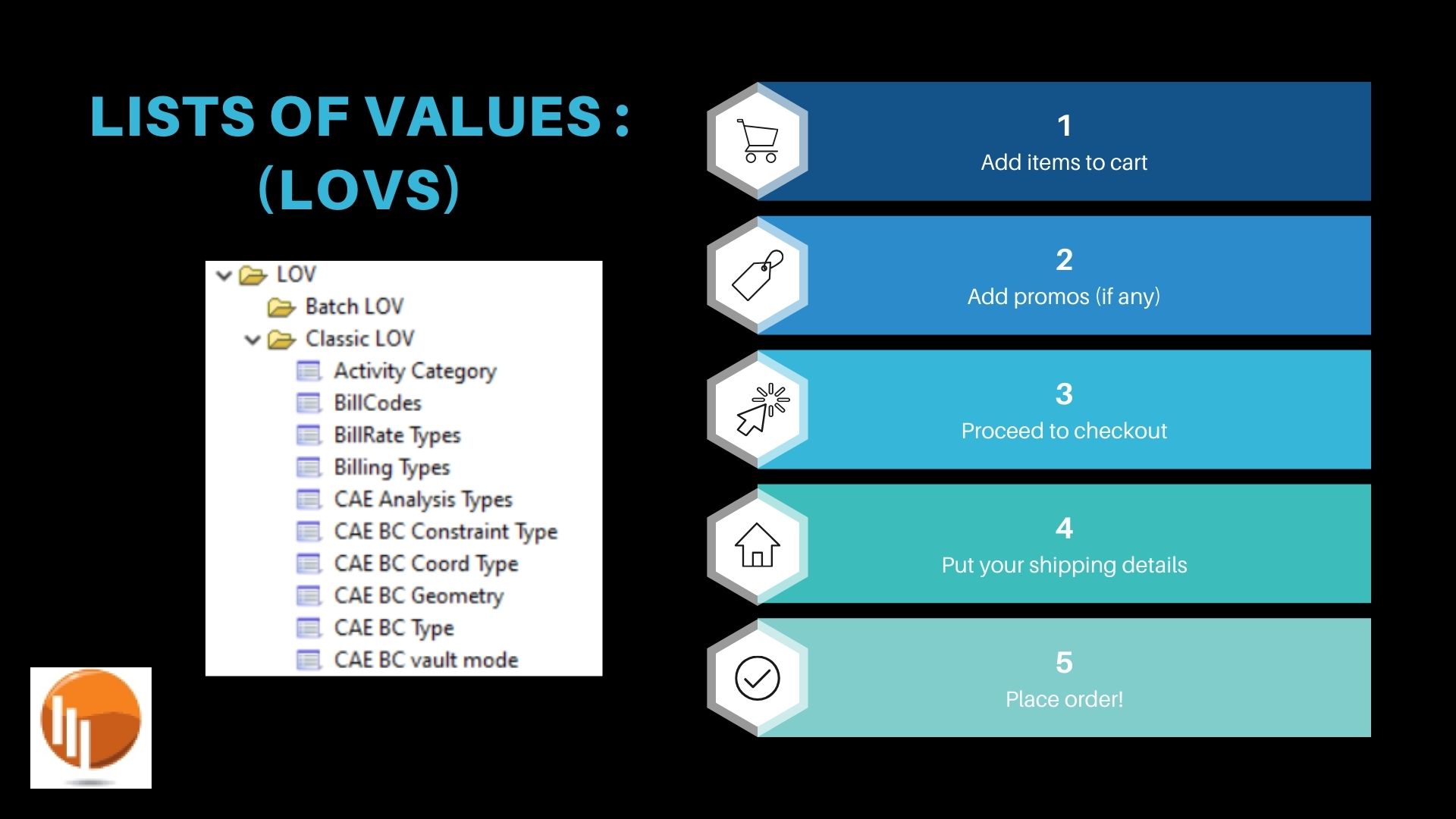
In today’s digital landscape, where data is king, ensuring the accuracy and consistency of information is paramount. One key aspect of achieving this goal is through the implementation of Lists of Values (LOVs) within software systems. LOVs provide users with predefined sets of options to select from when entering data, thereby enhancing efficiency and minimizing errors.
Let’s delve deeper into the world of LOVs and explore their significance in data management.

Lists of Values : (LOVs)
Definition and Purpose of LOVs

Lists of Values (LOVs) offer users a curated selection of values for specific properties of objects within a system. Whether it’s choosing a product category, selecting a geographical region, or entering a date, LOVs provide users with a structured set of choices. By presenting predefined options, LOVs streamline data entry, improve productivity, and reduce the likelihood of errors.
Implementation of LOVs
Developers integrate LOVs into software systems by attaching them to properties on business objects. This seamless integration enables end-users to select values for object properties during data entry, enhancing the overall user experience.
Types of LOVs
LOVs come in various types to cater to different requirements:
- Exhaustive: Contains all possible choices.
- Suggestive: Provides suggested choices, allowing users to enter their own values if needed.
- Range: Allows for a range of valid numeric values.
Cascading LOVs
Lists of Values (LOVs) can be nested hierarchically, enabling users to navigate through levels of choices. This hierarchy doesn’t need to be balanced and can include filtering of values based on previous selections, providing a seamless user experience.
Implementation in BMIDE
LOVs are configured within the Business Modeler IDE (BMIDE), typically stored in the Extensions folder. Classic LOVs store values within the project and can be extended to fetch values through custom code. Externally managed (batch) LOVs allow values to be stored in the database separately from the template.
Creation and Localization of LOVs
Creating LOVs involves defining the name, description, type, and usage, as well as specifying localization for different language locales. LOV values can be manually entered or loaded from the database, providing flexibility in data management.
Attachment to Business Objects
To utilize LOVs in a system’s user interface, they must be attached to properties on business objects. This ensures that users have access to predefined options when entering data, thereby maintaining data integrity.
In conclusion,
Lists of Values (LOVs) play a crucial role in maintaining data integrity and facilitating efficient data entry within software systems. By providing users with predefined options for selecting values, LOVs enhance productivity, accuracy, and consistency, ultimately contributing to the success of businesses in today’s data-driven world.
Contact Us to Get Our PLM Services
CONTACT INFO
Hotline: +1.248-275-4138
- info@autotechmation.com
- 27950 Orchard Lake Rd Suite #116 Farmington Hills MI 48334
